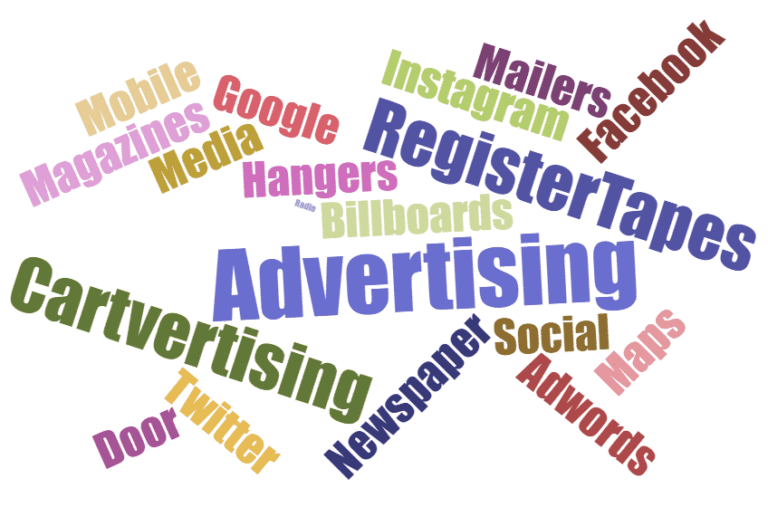Why Small Businesses Need to Use Infographics
Today, heartwarming content can only get you so far. It’s hard to hear, but contemporary clients want cold hard facts. Even more so, customers want new content to be at once informative and accessible. Think about the textbooks you read as a child — were you drawn more often to dense paragraphs or bright charts and graphs?
Infographics are an easy way to organize your information so your reader can quickly understand it. The less they have to grapple with the tips or stats you’re using, the more valuable they’ll seem. Moreover, these illustrated guides can help a customer move through information like a flowchart and allow your business to get a complicated point across quickly. Whether you’re a salon sharing the correct way to layer and order products or a restaurant illustrating a recipe guide, infographics work.
It’s Easier to Process Information Visually
While it may surprise you, almost 50% of our brains are dedicated solely to visual processing. 70% of all our sensory receptors are in our eyes, and humans can process a visual scene in less than 1/10th of a second. In this way, infographics are scientifically shown to work and play off the human brain’s natural motivations.
It’s true that reading text is also a visual task, but humans cannot immediately process a paragraph the way they can a visual scene. This is because of a concept called “processing efficiency.” With text, our brains have to decode every single symbol in a word, which means more cognitive effort. This is part of why people are naturally drawn to easy, breezy infographics, which can immediately allude to what they want to cover through illustrations.
Difficult Information Needs the Boost
Moreover, in another study conducted on medicine labels, it was shown that only 70% of people fully understand information from text processing alone. Conversely, 95% understood the facts when there were text and pictures included.
In this way, it may be difficult to fully articulate to a salon owner’s customers why the harmful chemicals competitors use are so dangerous. Those customers are certainly not going to sit through any medical jargon or read through lists of chemicals. However, they will be drawn to a huge infographic on the wall showing the effects of said chemicals.
Similarly, a law office will waste a lot of time trying to fully explain court proceedings to a client. Without a professional background in the field, the customer will likely struggle to understand why their trial has to function exactly as the lawyer says it must. That being said, if the lawyer could send their client home with an illustrated brochure or pull out an infographic to show their client exactly what they’re talking about, it would be much easier to proceed.
Customers are Overwhelmed with Daily Information
As if it wasn’t already hard enough for small businesses to get their points across — customers today are overwhelmed with information and suffer from “information overload.” On social media, a restauranteur’s tips are going to have to compete with other helpful company guides, informative ads, and personal content. This means that their ideas will need to be presented as easily as possible to help them cut through the fat.
Studies show that at this point, we receive five times as much information as we did in 1986. On an average day, your customers likely consume over 100,500 words outside of work. In this way, their brains are fried! They need you to boil your information down to the shortest, most easily illustrated facts.
Customers Skip Over Most Text
On average, customers only read 28% of the words they see each time they visit a web page. This is why advertisers have been relying on large, flashy text for decades. When you’re advertising a promotion, you really need to look into the facts about what works and what doesn’t. To see a real return on your investment, you’ll need to create engaging content by any means possible. In 2020 there are all sorts of interactive social media or blog posts your business could be using, but you’ll need to work a little harder in print advertising.
This information overload is part of what ensures customers will look towards clearly advertised discounts, especially those with visual aids like coupons. Where a radio ad requires listeners to process and retain everything they hear in a few seconds, print advertising gives your customer a second to sit with what they’re viewing. Coupons also allow you to take advantage of print materials and will compete easily with anything else on a page.
How to Definitely Catch Their Eye
After creating a large, bold coupon, it’s up to you to decide what you want to use it to draw attention to. Whenever you use coupon advertising, you’re likely hoping to build a new customer base or highlight a niche product by offering an unbeatable price. That being said, because coupons are guaranteed to draw the consumer’s eye, you should be taking advantage of all the real estate within it. Beneath your promotion, you can attach your handle, email address, or website to bring in extra traffic. This is also a smart way to combine online advertising with a local campaign because print advertising allows you to target your audience more readily than virtual ads ever will.
How to Advertise in Real Life
To really hone in on this, you may look into grocery store advertising, which allows for hyper-local targeting. In doing so, you can make sure the thousands of people who visit grocery stores each week see your coupon. Because grocery stores bring in the majority of their customers from a three-mile radius of the store, it’s important to partner with the store you think your customers shop at.
From there, you’re guaranteed thousands of impressions on your supermarket advertisement, especially through programs like coupon-receipt advertising. These campaigns allow you to print your coupons on the backs of grocery store register tape, so your supermarket advertisement goes home in the pocket of every single shopper. From there, you’re looking at thousands of new potential customers, who are now guaranteed to look at your ad — no matter how many others they read that day.



